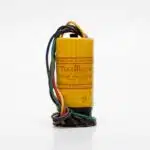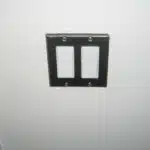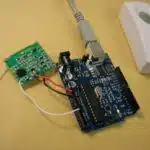Time switches are an essential component in modern electrical systems, enabling the automation of various tasks through the precise control of power supply. As an electrical engineer, understanding how to wire a time switch is crucial for ensuring optimal performance and reliability of electrical circuits.
Wiring a time switch involves connecting it to the power source, load device, and other control components such as sensors or relays. This process requires technical expertise and attention to detail to avoid any potential hazards caused by faulty wiring. In this article, we will explore step-by-step instructions on how to wire a time switch correctly and safely. Whether you are a DIY enthusiast or a professional electrician, this guide will equip you with the knowledge necessary to install and operate time switches efficiently. So let’s dive into the world of time switches and discover how they can serve us better!
Understanding Time Switches And Their Uses
Time switches, also known as timers, are devices that control when electrical appliances or circuits are turned on and off. They can be programmed to operate at specific times of the day or week, making them useful for a variety of applications such as lighting systems, irrigation pumps, and HVAC systems. Time switches offer several advantages over manual switching systems including energy savings, improved convenience and flexibility. However, they also have their limitations which need to be considered before installation.
One advantage of time switches is that they can help reduce energy consumption by turning off appliances and equipment when they are not needed. This can result in significant cost savings on electricity bills over time. Additionally, time switches provide greater flexibility in scheduling the operation of appliances or equipment which can be especially helpful for businesses that operate during irregular hours.
Installation tips and tricks for time switches include using appropriate wiring methods based on the type of switch being installed and ensuring that all connections are tight and secure to prevent electrical hazards. It is also important to carefully read the manufacturer’s instructions prior to installation in order to avoid any mistakes that could lead to malfunctioning or damage.
When considering the use of a time switch it is important to keep in mind its limitations. For example, some models may not work well with certain types of light bulbs or other electrical loads while others may require additional wiring or programming steps which could add complexity to the installation process. Therefore, it is important to select a model that meets your specific needs while also taking into account any additional requirements for installation and maintenance.
Safety Precautions Before Beginning Wiring
What are some safety precautions you need to take before wiring a time switch? Checking equipment and having the right safety gear are crucial steps in ensuring your safety. Before beginning, ensure that all tools and equipment are in good working condition. Check for any frayed wires, damaged insulation, or other defects that may pose a risk during installation. Wearing personal protective equipment such as gloves, goggles, and boots can offer protection from electrical shocks and other potential hazards.
When it comes to checking equipment, make sure that you have the correct type of switch for your specific application. Some time switches are designed for residential use while others are intended for commercial applications or industrial settings. By selecting the right switch for your needs, you can prevent potential issues such as overheating or circuit overload.
In addition to checking equipment and wearing safety gear, it is important to remember that electricity can be dangerous if not handled properly. Always turn off the power supply before starting any work on electrical systems. This will help minimize the risk of electrical shock and reduce the likelihood of damage to your equipment. Once you have taken these precautions, you can move on to identifying the power source and load device necessary for wiring your time switch correctly.
Identifying The Power Source And Load Device
The first step in wiring a time switch is to identify the power source. This is crucial as it ensures that the switch operates efficiently and safely. Power sources can vary depending on the installation location, but they are typically AC (alternating current) and DC (direct current). It’s important to note that power sources can be dangerous, so always turn off the circuit breaker or unplug any devices before beginning work.
After identifying the power source, you need to identify the load device. This is what your time switch will control or operate. Load devices can include anything from lights, pumps, fans, heaters, or anything else that requires an electrical supply to function. In order to determine the correct load device for your time switch, you must consider its voltage and amperage requirements. Using a device with voltages or amperages above those specified by your time switch could cause damage to both the switch and the device.
In summary, proper identification of both power sources and load devices is essential in ensuring safe and efficient operation of a time switch. Before starting any wiring project, it’s important to read instructions carefully and double-check all connections before turning on the circuit breaker or plugging in any devices. By taking these precautions and following proper guidelines for load device selection, you can ensure that your time switch will function optimally for years to come. Next up is selecting the right time switch for your needs based on its features and capabilities.
Selecting The Right Time Switch For Your Needs
Size is a key factor when choosing a time switch, as it must fit into the space available. Voltage requirements should also be taken into account, as switches typically come in a range of voltages. Frequency is an important consideration, as some applications require a higher or lower frequency than what is available. Furthermore, it is important to check the maximum contact current and voltage rating of the time switch. Careful attention should be paid when selecting a time switch to ensure it meets the requirements of the application. Choosing the right time switch is essential for reliable operation.
Size
When selecting the right time switch for your needs, sizing considerations play a crucial role. It is essential to choose a time switch that is of appropriate size for the application at hand. An oversized time switch may result in higher costs, while an undersized one may not meet the requirements of the application. Therefore, it is necessary to consider factors such as voltage ratings, current ratings, and load types when selecting the appropriate size of a time switch.
Installation challenges can also arise when selecting a time switch. The size of the time switch can affect its installation process. For instance, an oversize time switch may require more space than what is available in an electrical panel or enclosure. On the other hand, an undersize time switch may be challenging to install because it does not fit correctly into the enclosure or panel. Therefore, it is necessary to take into account both sizing considerations and installation challenges when selecting a suitable time switch.
In conclusion, choosing a suitable size for your chosen time switch is vital for successful installation and operation. Sizing considerations can help you avoid costly mistakes that come with using either too large or too small a time switch. Installation challenges are also minimized when you select an appropriately sized device that fits perfectly into your electrical panel or enclosure. By considering these factors carefully and seeking expert advice where necessary, you can select a reliable time switch that meets all your needs satisfactorily.
Voltage
When selecting the right time switch, one of the most critical factors to consider is voltage measurement and regulation. Voltage determines the amount of current that flows through an electrical circuit and can have potential hazards if not appropriately regulated. Therefore, it is essential to choose a time switch that matches the voltage requirements of your application. Failure to do so can result in equipment failure, safety hazards, and increased energy costs.
The voltage rating of a time switch is the maximum amount of voltage that it can handle without causing damage or malfunction. It is crucial to note that different types of loads require different voltage ratings. For instance, resistive loads such as incandescent bulbs may require a lower voltage rating than inductive loads such as motors. It is also necessary to consider the power supply’s voltage stability when selecting a time switch since fluctuations in voltage can affect its operation.
In conclusion, choosing the correct voltage rating for your time switch is vital for safe and efficient operation. It helps ensure that your electrical equipment does not suffer any damage due to overvoltage or undervoltage conditions. As such, it is essential to consult with an expert in electrical engineering when selecting a suitable time switch for your needs. They can help you determine the correct voltage rating based on load type and power supply stability while ensuring compliance with relevant regulations and standards.
Frequency
In addition to voltage rating, another crucial factor to consider when selecting the right time switch for your needs is frequency settings. The frequency of an electrical signal refers to the number of cycles it completes per second, which is measured in Hertz (Hz). The standard frequency setting for most countries is 50 or 60 Hz, depending on their national power grid. However, some applications may require a different frequency setting to operate correctly.
The accuracy of timekeeping is another essential consideration when choosing a time switch. Time accuracy refers to how closely a device can keep track of time compared to an accurate reference source. For instance, a clock that loses one second per day has lower time accuracy than one that loses one second per week. Inaccurate timekeeping can cause significant issues in applications such as industrial automation and process control systems that require precise timing.
When selecting a time switch, it is crucial to consider both the frequency settings and time accuracy requirements for your specific application. As with voltage regulation, failure to choose the correct settings can result in equipment failure, safety hazards or increased energy costs. Therefore, consulting with an expert in electrical engineering can help ensure that you select the right time switch based on these critical factors while complying with relevant regulations and standards.
Gathering The Necessary Tools And Materials
As you have selected the right time switch for your needs, it is time to gather the necessary tools and materials to wire the switch. This step requires careful consideration as it can impact the safety of your home or office. A wiring task requires attention to detail, patience, and a firm grasp of electrical engineering principles.
Before you proceed with wiring the time switch, ensure that you have all the necessary tools and materials. These include a voltage tester, wire stripper, screwdriver, electrical tape, cable ties, and a drill. You will also need wires with different colors, depending on your switch’s requirements. Plan out your shopping list and budgeting tips beforehand so that you don’t overspend while buying these items.
Here are some pointers to help you gather all the necessary tools and materials:
- Check the wiring diagram of your time switch before purchasing any tools
- Make sure that you buy quality wires that can handle high voltage levels
- Test all equipment before use to avoid potential hazards
- Always wear gloves while handling wires
Now that you have gathered all the required tools and materials let’s move on to how to turn off the power supply before starting with wiring the time switch.
Turning Off The Power Supply
Prior to wiring a time switch, it is crucial to ensure that the power supply is disconnected. Disconnection of the power supply is an essential safety measure that must be taken before any electrical work is carried out. Failure to turn off the power supply can lead to electric shock or even death. Therefore, it is important to take necessary precautions.
To disconnect the power supply, locate the circuit breaker or fuse box and turn off the corresponding switch or remove the fuse. It is advisable to use a voltage tester to confirm that there is no electricity flowing through the wires before proceeding with any work. The tester should be used on all wires that are going to be worked on during installation.
Once you have confirmed that there is no electricity running through the wires, you can proceed with installing the time switch. It is important to note that in some instances, disconnecting only one circuit may not be enough; therefore, it’s essential to unplug all other circuits connected to the same panel. In addition, one should avoid touching any exposed wires after turning off power since they might still carry current from another circuit in contact with them. In this way, you will have ensured your safety while working with electrical systems.
Transition: With the power supply disconnected and safety measures in place, we can now move onto removing the old switch and preparing for installation of a new time switch.
Removing The Old Switch
Now that the power supply is turned off, it is safe to proceed with removing the old time switch. As an electrical engineer, safety should always be a top priority when working with electrical components. It is crucial to ensure that there is no power running to the switch before attempting any repairs or replacements.
To begin removing the old switch, first locate the screws that are holding it in place and use a screwdriver to remove them. Once all of the screws have been removed, gently pull the switch away from the wall. Be careful not to disturb any of the wires that are connected to it. If necessary, label each wire so that you can easily reconnect them correctly later on.
After removing all of the screws and disconnecting all of the wires from the old switch, you can now move on to connecting the wires to your new time switch. This process will vary depending on your particular model of time switch, so it is essential to refer to your manufacturer’s instructions for specific details on how to do this correctly. Remember always to keep safety in mind and never attempt any repairs or replacements without turning off the power supply first.
Connecting The Wires To The New Time Switch
To connect the wires to the new time switch, you need to first ensure that the switch is compatible with your electrical system. This means that you need to check if your electrical system has a single-phase or three-phase connection. Once you have determined this, ensure that the time switch is rated for the correct voltage and amperage of your electrical system.
Before connecting any wires, it is essential to know how to strip wires properly. This can be done by using wire stripping techniques like using a wire stripper tool or a sharp knife. It is important not to damage the copper strands while stripping the insulation off the wire, as this could cause poor connectivity and lead to potential hazards.
Once you have stripped the wires, connect them securely to the appropriate terminals on the time switch according to the manufacturer’s instructions. Ensure that all connections are tight and secure before testing the system. Any loose connections could result in overheating and failure of both the switch and connected devices. With proper wiring techniques, your time switch should function seamlessly without any issues.
Transitioning into attaching sensors and relays in subsequent section: Now that we have connected all necessary wires correctly, let us move on to attaching sensors and relays for optimal functioning of your time switch system.
Attaching Sensors And Relays
Attaching sensors and relays is a crucial step in wiring a time switch. Before proceeding with the attachment process, it is important to familiarize oneself with soldering techniques to ensure that the connections are secure and long-lasting. A common technique used in soldering involves heating up the joint area and applying solder, which cools down to create a solid connection. It is essential to avoid overheating the wires or components during this process as it can damage them.
In terms of mounting options, there are several options available depending on the application and preference of the user. For instance, surface mounting entails attaching components directly onto a circuit board or panel, while through-hole mounting involves inserting leads or wires into holes on a circuit board. Other options include chassis mounting and panel mounting, each suited for specific applications. It is important to select the most appropriate option based on factors such as space availability and ease of access.
Properly attaching sensors and relays is only one part of wiring a time switch; testing the circuit for proper functionality is equally important. This involves checking whether all connections are secure and correctly attached, ensuring that all components are in their correct positions, and verifying that there are no short circuits or incorrect voltage levels. Once all these checks have been completed successfully, users can proceed with configuring their time switch according to their specific needs and requirements.
Testing The Circuit For Proper Functionality
Once the wiring is complete, it is essential to test the circuit for proper functionality. Testing frequency is an important aspect of this process as it ensures that the time switch is functioning accurately. The testing procedure involves turning on the power supply and observing the time switch’s operation under different settings.
During testing, it is crucial to identify any errors in the circuit. Error identification can be achieved by verifying that all connections are secure and that there are no loose wires or short circuits. It is also essential to check that each component in the circuit has been correctly installed and connected according to its specifications.
In addition to these steps, some other measures can be taken to ensure proper functionality during testing. Here are three items you should consider adding to your checklist:
- Verify that the time switch settings match your needs
- Ensure that all components within the circuit have been appropriately grounded
- Test the circuit with different loads to ensure that it handles various levels of power consumption
With these steps in place, you can be confident that your time switch will work as expected, providing reliable automation for your electrical system. Now, we move on to securing the time switch and closing the electrical box.
Securing The Time Switch And Closing The Electrical Box
Mounting considerations are an important aspect of securing the time switch and closing the electrical box. It is crucial to install the switch in a secure location that is easily accessible for maintenance purposes. The mounting surface should also be sturdy enough to hold the weight of the switch without wobbling or shaking. If the mounting surface is not suitable, it may lead to loose connections and damage to the internal components of the switch.
Wiring techniques play a significant role in ensuring that your time switch works effectively and safely. It is vital to follow proper wiring procedures, such as using appropriate wire connectors, stripping wire ends correctly, and securing wires tightly. Incorrect wiring can cause electrical hazards such as short circuits, fires, and electrocution. Therefore, it is advisable to consult with a professional electrician if you are unsure about how to wire your time switch.
Once you have secured your time switch and closed the electrical box, you can now proceed with turning on the power supply. However, before doing so, it is crucial to double-check all connections and ensure that they are secure. Turning on power without verifying all connections can result in damage to both your time switch and other electrical equipment connected to it. By taking these precautions during installation, you can ensure that your time switch operates efficiently while maintaining safety standards.
As we move forward into turning on power supply for our newly installed time switch, let us keep in mind that proper installation plays a massive role in its long-term performance. We must always prioritize safety when dealing with electrical equipment by following guidelines set forth by professionals in our field. Remember that even small mistakes made during installation can lead to severe consequences down the line; therefore, meticulous attention should be given at every step of this process.
Turning The Power Back On
- The first step in turning the power back on is to turn on the breaker, which can be done by flipping the switch on the breaker box.
- After the breaker has been turned on, the next step is to connect the wires to the time switch.
- This involves running the black wire from the power source to the time switch and connecting the white wire from the power source to the neutral terminal of the time switch.
- The ground wire should then be connected to the ground terminal of the time switch.
- Once all of the wires have been connected properly, it is important to test the switch to ensure it is working correctly.
- This can be done by turning the switch to the on position and testing for power at the load terminals of the time switch.
Turning On The Breaker
Before wiring a time switch, it is important to ensure that the circuit breaker is checked. Turning off the breaker for safety is an essential step in this process. It prevents any electrical shocks or accidents from happening while working on the time switch.
Checking the circuit breaker involves turning off all power to the circuit before starting. This can be done by switching off the main breaker in the electrical panel. Once this has been done, it is important to double-check that all power has indeed been turned off before proceeding with any work on the time switch.
Turning on the breaker should only be done once all wiring and connections have been properly installed and secured. Before turning on the breaker, it is important to check one more time that everything has been wired correctly and there are no loose connections. Once everything has been properly checked, turn on the breaker and test the time switch to ensure it works as intended.
Connecting The Wires
After ensuring that the circuit breaker is checked and turned off, the next step in wiring a time switch is connecting the wires. This step requires careful attention to detail and proper wiring techniques to ensure that the time switch operates smoothly and safely. The first thing to consider when connecting the wires is the compatibility of the time switch with the electrical system in use.
Different types of time switches have different wiring requirements, so it is important to read through the manufacturer’s instructions carefully before proceeding. Generally, there are three wires that need to be connected: one for power, one for ground, and one for load. These wires should be connected according to their respective colors: black for power, green or bare for ground, and red or blue for load.
It is important to ensure that all connections are secure and properly insulated before turning on the power again. Loose connections can cause sparks or fires, while poorly insulated connections can lead to electrocution or other accidents. Once all wires have been properly connected and secured, turn on the power again and test the time switch to make sure it is working correctly.
Testing The Switch
After successfully connecting the wires of a time switch, it is important to test its functionality before turning on the power. Testing the switch involves checking continuity and verifying accuracy. Once the switch is deemed functional, it can be safely turned back on.
To check continuity, use a multimeter to ensure that there are no breaks in the electrical circuit. This can be done by placing one probe on the power wire and another probe on the load wire. The multimeter should read a continuous flow of electricity between the two probes. If there are any breaks or interruptions in this flow, then there may be an issue with the wiring or connections.
Verifying accuracy involves setting the time switch to activate at a specific time and observing if it turns on and off accordingly. This process ensures that the time switch is correctly programmed and functioning as intended. It is important to monitor the switch for several days to ensure consistent performance. With proper testing completed, turning on the power can be done with confidence knowing that all safety precautions have been taken into consideration.
Programming The Time Switch For Optimal Performance
Once the time switch is properly wired and installed, it is important to program it correctly to ensure optimal performance. Here are some programming techniques that can be used:
Set the correct time: The first step in programming a time switch is to set the correct time. This can usually be done by entering the current time using the keypad provided on the switch. It is important to double-check that the time has been set correctly, as any errors will affect the operation of the switch.
Set schedules: Most time switches allow users to set schedules for different days of the week, weekends, or holidays. Schedules can be programmed using a combination of on/off times and days of operation. It is important to carefully consider your scheduling needs before programming your switch, as this will affect its overall performance.
Test and adjust: Once your schedule has been programmed, it’s important to test and adjust it as necessary. This can involve monitoring your electrical usage over several days or weeks, and making adjustments based on your findings.
Troubleshooting Tips
Even with proper programming, there may be times when your time switch doesn’t perform as expected. Here are some troubleshooting tips that can help:
- Double-check wiring: If your time switch isn’t working properly, one of the first things you should check is its wiring. Make sure all connections are secure and tight.
- Check power source: Another common issue with time switches is a lack of power supply. Make sure that your power source is sufficient for your switch’s needs.
- Reset switch: If all else fails, try resetting your switch back to its default settings and reprogramming it from scratch.
In summary, proper programming techniques can help ensure optimal performance from a time switch. However, if troubleshooting issues arise despite these efforts, there are several steps you can take to identify and address them.
Troubleshooting Common Issues
Troubleshooting Common Issues:
When working with a time switch, it is important to be able to troubleshoot common issues that may arise in order to ensure proper functionality. One common issue is resetting settings due to power outages or other disruptions. If your time switch has lost its programmed settings, consult the user manual for instructions on how to reset the device.
Another issue that may occur is the need for replacement parts. Over time, certain components of the time switch may wear down or break, causing malfunctions. It is important to ensure that any replacement parts are compatible with your specific model of time switch and installed correctly.
To assist in troubleshooting these common issues, refer to the table below which outlines potential problems and solutions:
| Problem | Solution |
|---|---|
| Time switch not turning on/off at correct times | Check programming and reset if necessary |
| Time switch not functioning at all | Check power source and wiring connections |
| Time switch making unusual noises | Check for loose or damaged components |
By following these troubleshooting methods, you can alleviate common issues that may arise with your time switch. However, it is also important to implement maintenance tips for long-term use, which will be discussed in the subsequent section.
Maintenance Tips For Long-Term Use
Tips for Maintenance
As electrical engineers, we know that proper maintenance is crucial for the longevity of any electrical device. When it comes to time switches, there are a few key strategies you can employ to ensure they remain in good working order. First and foremost, be sure to clean your time switch regularly. Dust and debris can accumulate over time and cause malfunctions or even damage the device itself. A simple wipe down with a soft cloth should do the trick.
Another important tip is to check your time switch’s settings periodically. Over time, these may become misaligned or drift out of sync with your desired schedule. This can be especially problematic if you rely on your time switch for important operations such as lighting control or security systems. Make sure to test your settings regularly and reprogram as necessary.
Finally, consider investing in high-quality components when setting up your time switch system. Cheap or poorly-made devices can malfunction more easily and may require more frequent replacements or repairs. By choosing reliable products from reputable manufacturers, you can help ensure that your time switch will last for years to come.
Longevity Strategies
In addition to regular maintenance tips, there are several other strategies you can use to maximize the lifespan of your time switch system. One key factor is proper installation. Be sure to follow all manufacturer guidelines carefully when setting up your device, including wiring diagrams and instructions for programming.
Another important consideration is environmental factors such as temperature and humidity levels. Extreme conditions can cause wear and tear on electrical devices over time, so make sure to keep your system within recommended operating parameters whenever possible.
Ultimately, the best way to extend the life of any electrical device is through careful attention and proactive maintenance practices. By taking the time to clean, test, and reprogram your time switch system regularly, you can help ensure that it continues to function reliably for years into the future without needing costly replacements or repairs.
Remember that while these tips may seem like small details, they can make a big difference in the overall longevity of your time switch system. By following these guidelines and implementing best practices for maintenance and installation, you can help ensure that your device operates smoothly and reliably for years to come.
Conclusion
In conclusion, wiring a time switch can be a complicated process. However, with the right tools and safety precautions, it can be done efficiently and effectively. As an electrical engineer, I recommend selecting a time switch that is suitable for your specific needs and ensuring that all necessary materials are gathered before beginning the wiring process.
Remember to always prioritize safety by turning off the power source and identifying the load device beforehand. Troubleshooting common issues may also be necessary in order to maintain optimal performance over time. As the saying goes, “an ounce of prevention is worth a pound of cure.” By following proper maintenance tips and techniques, you can ensure that your time switch will continue to perform at its best for years to come.
Image Credits







![How To Replace A Single-Pole Wall Switch 7 '... All in all it's just another [switch] in the wall.' ...](https://green-life.blog/wp-content/uploads/2023/05/17xmP5qMtVjq-150x150.jpg.webp)





















